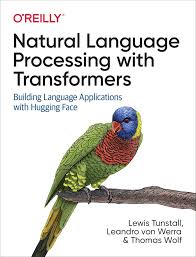Large Language Models (LLMs) are revolutionizing numerous fields, but their deployment presents significant infrastructure challenges. This white paper explores server requirements for LLMs, with a focus on Retrieval-Augmented Generation (RAG) architectures and the growing landscape of open-source models available on Hugging Face. We examine the unique demands of RAG-LLM systems, including vector databases, document processing, and efficient retrieval. We provide hardware and software recommendations, optimization strategies, and a comprehensive list of references to guide users in developing, deploying, and managing both general LLMs and specialized RAG-LLM applications, emphasizing prominent open-source models.
White Paper: Server Requirements for Large Language Models (LLMs) with a Focus on RAG-LLM Development and Open-Source Models
Abstract:
Large Language Models (LLMs) are revolutionizing numerous fields, but their deployment presents significant infrastructure challenges. This white paper explores server requirements for LLMs, with a focus on Retrieval-Augmented Generation (RAG) architectures and the growing landscape of open-source models available on Hugging Face. We examine the unique demands of RAG-LLM systems, including vector databases, document processing, and efficient retrieval. We provide hardware and software recommendations, optimization strategies, and a comprehensive list of references to guide users in developing, deploying, and managing both general LLMs and specialized RAG-LLM applications, emphasizing prominent open-source models.
1. Introduction:
LLMs offer remarkable text processing capabilities, but often struggle with factual accuracy and up-to-date information. RAG addresses these limitations by integrating external knowledge sources. This paper details the infrastructure needed for LLM deployment, focusing on the added complexities of RAG and the accessibility of open-source LLMs through platforms like Hugging Face.
2. Factors Influencing Server Requirements (Including RAG):
Several factors govern the server resources required for LLMs, with RAG introducing specific considerations:
- 2.1 Model Size: The number of parameters in the LLM core remains critical.
- 2.2 Model Architecture: LLM architecture and RAG pipeline components influence computational needs.
- 2.3 Precision: Numerical precision affects memory usage.
- 2.4 Inference Speed: RAG adds retrieval latency, requiring optimization.
- 2.5 Concurrency: Handling concurrent RAG requests demands careful resource management.
- 2.6 Knowledge Base Size and Structure: Impacts retrieval performance and storage.
- 2.7 Retrieval Method: Retrieval efficiency (dense vs. sparse) affects computation.
- 2.8 Document Processing: Preprocessing and indexing complexity influences resources.
3. Hardware Recommendations (For RAG-LLM Systems):
- 3.1 CPU: A multi-core processor is essential for managing the RAG pipeline.
- 3.2 GPU: NVIDIA GPUs are crucial for LLM and potentially retrieval computations.
- 3.3 RAM: Ample RAM is needed for the LLM, intermediate data, and potentially parts of the knowledge base or vector indices.
- 3.4 Storage: Fast NVMe storage is critical for rapid knowledge base access.
- 3.5 Networking: High-bandwidth networking is essential for communication between RAG components.
4. Software Considerations (For RAG-LLM Systems):
- 4.1 Operating System: Linux distributions are typically preferred.
- 4.2 Deep Learning Frameworks: TensorFlow, PyTorch, or specialized RAG frameworks.
- 4.3 CUDA Drivers and Libraries: Essential for GPU utilization.
- 4.4 Serving Tools: vLLM, SGLang, and specialized RAG serving solutions.
- 4.5 Vector Database: Pinecone, Weaviate, Chroma, or similar.
- 4.6 Document Processing Pipeline: LangChain, LlamaIndex, or other tools.
- 4.7 Retrieval Engine: FAISS, Annoy, or custom implementations.
5. Model-Specific Considerations (Including Open-Source):
- 5.1 Deepseek: Deepseek models have varying sizes; consult their documentation.
- 5.2 Open-Source Models (Hugging Face): Hugging Face hosts numerous open-source LLMs, including:
- Llama 2: A powerful and versatile model from Meta.
- Mistral: Known for efficiency and strong performance.
- Falcon: A competitive open-source LLM.
- MPT: Another notable open-source model.
- RedPajama-INCITE: Models trained on the RedPajama dataset.
6. Optimization Techniques (For RAG-LLM Systems):
- 6.1 Quantization, Pruning, Knowledge Distillation: Optimize the LLM itself.
- 6.2 Retrieval Optimization: Efficient indexing, caching, and query optimization.
- 6.3 Document Chunking and Indexing: Effective strategies for managing documents.
7. RAG-LLM Development Workflow:
- 7.1 Data Preparation: Cleaning, structuring, and chunking the knowledge base.
- 7.2 Embedding Generation: Creating vector representations of chunks.
- 7.3 Vector Database Indexing: Storing and indexing embeddings.
- 7.4 Retrieval Implementation: Querying the vector database.
- 7.5 LLM Integration: Connecting retrieval to the LLM.
- 7.6 Evaluation and Refinement: Testing and optimizing the pipeline.
8. Conclusion:
Developing RAG-LLM systems, especially with open-source models, requires careful planning. Understanding the interplay of model characteristics, hardware, software, and optimization techniques is crucial for successful deployments.
9. Comprehensive References:
- General LLMs:
- Vaswani, A., et al. (2017). Attention is All You Need. Advances in Neural Information Processing Systems, 30.
- Radford, A., et al. (2018). Improving Language Understanding by Generative Pre-Training.
- Brown, T. B., et al. (2020). Language Models are Few-Shot Learners.1 Advances in neural information processing systems, 33, 1877-1901.
- Guu, K., et al. (2020). REALM: Retrieval-Augmented Language Model Pre-Training. International Conference on Learning Representations.
- Izacard, G., & Grave, E. (2021). Learning to Retrieve with Generative Supervision. International Conference on Learning Representations.
- Open-Source LLMs:
- Llama 2: Touvron, H., Lavril, T., Izacard, G., Martinet, X., Lachaux, M.-A., Lacroix, T., Rozière, B., Goyal, N., Hambro, E., Azhar, F., Rodriguez, A., Joulin, A., Grave, E., & Lample, G. (2023).3 Llama 2: Open Foundation and Fine-Tuned Chat Models.
